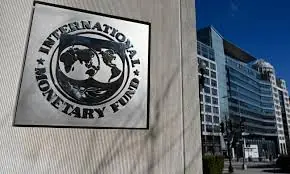S&P downgrades Pakistan’s credit rating on weakening of several metrics
ISLAMABAD: The S&P Global Ratings lowered its long-term sovereign credit rating on Pakistan to “CCC+” from “B-”, and the short-term rating to “C” from “B” on enduring external, economic and fiscal risks.
The rating agency stated that Pakistan’s already low foreign exchange reserves would remain under pressure throughout 2023, barring a material decline in oil prices or a step-up in foreign assistance.
A series of shocks—severe floods, surging food and energy inflation, and rising global interest rates—will lead to weaker economic and fiscal outcomes, and refinancing challenges over the medium term.
Pakistan also faces elevated political risks, which may affect its policy trajectory over the next 12 months.
“As a consequence, we lowered the sovereign credit ratings on Pakistan to ‘CCC+/C’ from ‘B-/B’. The outlook is stable.
“We also lowered our long-term issue rating on Pakistan’s senior unsecured notes to ‘CCC+’ from ‘B-’,” it added.
The stable outlook reflects the balance of further risks to Pakistan’s external liquidity position and fiscal performance over the next 12 months against the prospect of additional support from multilateral and bilateral partners.
“We could lower our ratings if Pakistan’s external indicators deteriorate rapidly or fiscal deficits widen to exceed the domestic banking system’s financing capacity. One potential indication of domestic financing stress would further increase the government’s interest burden, which we estimate will exceed 40 percent of government revenues in 2023.
“Conversely, we may raise our ratings if Pakistan’s external and fiscal positions improve materially from current levels. Evidence of improvement could include a sustained rise in foreign exchange reserves, as well as a stabilisation of Pakistan’s debt service costs relative to revenues and a lengthening of debt maturities.
“We lowered the ratings to reflect a continued weakening of Pakistan’s external, fiscal, and economic metrics. Given high gross external financing needs, and limited foreign exchange reserves, Pakistan’s balance of payments outlook remains vulnerable to energy price developments and the availability and timing of foreign support. We expect the ratio of debt to GDP and budgetary deficits to remain elevated, with more than 40 percent of government receipts used to finance interest payments, thereby reducing the government’s capacity to finance investment and social support.”
Severe flooding during the summer of 2022 has imposed additional hardships on households and business, further constraining growth.
Pakistan’s fiscal year 2023 (year ending June 2023) economic growth will be much slower than we previously anticipated. In addition to the impact of severe weather in August and September, tighter domestic monetary conditions and elevated inflation will also weigh on economic activity.
The Pakistan government’s policy reform efforts will face difficult macroeconomic and political challenges, and popular pressure against plans to phase out social support measures.
Pakistan’s economy faces a weaker outlook in fiscal 2023 following the floods. Simultaneously, domestic demand is grappling with rising prices, particularly for staple goods. Consumer price index (CPI) inflation has surged to more than 20 percent year on year at the national level, and will remain elevated for the rest of this fiscal year.
After successfully completing the seventh and eighth reviews under the IMF’s Extended Funding Facility (EFF) programme, the Pakistan government is facing fresh challenges in meeting the performance requirements for subsequent reviews. Disbursements under the EFF, which began in July 2019, amount to approximately $4.0 billion so far, including a $1.2 billion allocation in August 2022.
The current inflationary environment, coupled with a material slowdown in economic activity and, in some cases, severe humanitarian needs related to the floods, complicates the implementation of measures to consolidate the government’s wide fiscal deficit. It will be more difficult for the government to achieve a primary fiscal balance surplus, and boost its stock of foreign exchange reserves, than it was in earlier in 2022.
With its tenure set to end by August 2023 or earlier, the government has limited time to implement meaningful economic reforms, especially those that may imperil electoral support for coalition members. We expect political uncertainty to remain elevated over the coming quarters, with continued pressure from the opposition to hold early elections.
The ratings on Pakistan remain constrained by a narrow tax base and elevated domestic and external security risks. The country’s security situation has gradually improved over recent years, but ongoing vulnerabilities weaken the government’s effectiveness and weigh on the business climate. Occasional tensions with India, and Pakistan’s extended land border with Afghanistan, pose challenges to Pakistan’s long-term economic outlook.
The Pakistani rupee’s recent depreciation against the US dollar has also contributed to a continued stagnation in the country’s nominal GDP per capita. Coupled with lower real GDP growth expectations, we forecast GDP per capita will stabilise just above US$1,500 by fiscal 2025.
“We project Pakistan’s current account deficit will narrow to 3.3 percent of GDP in 2023 versus 4.7 percent of GDP this year, but improvement is highly contingent on energy and food prices, as well as the continued imposition of administrative measures on imports. “We estimate that Pakistan’s usable foreign exchange reserves will remain low, at around one month of current account payments. Higher debt-servicing costs are exerting pressure on the government’s fiscal position. With revenues of just over 12 percent of GDP, the government’s capacity to raise taxes is among the weakest of all rated sovereigns.
Pakistan’s fiscal and external positions will face continued pressure from high inflation and interest rates, as well as difficult market conditions, which are set to continue over the next 12 months. We forecast the general government’s fiscal deficit will remain elevated at 6.5% of GDP in the current fiscal year, versus 7.9% of GDP in fiscal 2022. Weaker economic growth conditions this year will constrain revenue growth, even as the government maintains efforts to rein in its expenditure bill. The willingness and ability of policymakers to stay the course on tight expenditure settings while making continued enhancements to the country’s revenue program will be critical to meeting ambitious targets in the IMF’s EFF agreement.
“We forecast Pakistan’s average annual change in net general government debt will be 7.8% of GDP from fiscal 2023 through to fiscal 2025. This reflects our expectations of gradually smaller shortfalls, in combination with a continued depreciation of the Pakistani rupee.
“These trends will keep Pakistan’s net debt stock high at about 71% of GDP. Of the government’s gross debt stock, approximately 27% of GDP is external debt, and we estimate that slightly less than 40% of the total debt stock is denominated in foreign currency.
“Pakistan’s elevated interest expense relative to fiscal revenue is an additional constraint on our assessment of the government’s debt burden. We anticipate rising interest rates and a weaker rupee will keep this ratio highly elevated, at more than 45% of revenues, over the next few years. This interest burden level poses risks to the sustainability of the government’s debt stock.
“Financial support from bilateral creditors, including the United Arab Emirates, the People’s Bank of China (PBoC), and Saudi Arabia, remains critical to Pakistan’s ability to meet high external financing needs. We estimate total support from these three partners at $13.6 billion, and add this sum to the government’s total stock of debt. Additional support from bilateral partners could increasingly depend on Pakistan’s ability to maintain its EFF program with the IMF. Combined support from Pakistan’s international partners, including multilateral institutions, remains crucial in the country meeting its external financing needs over the coming years.
“Pakistan’s external data provision is timely and generally of good quality. The current account deficit has declined over recent months following a shortfall of 4.7% of GDP in fiscal 2022. However, this narrowing is partially the product of import compression, related to a much weaker economy and administrative measures to tighten the generation of credit facilities for imports.
“Despite our expectation for a moderation of the full-year deficit to about 3.3% of GDP, Pakistan’s overall balance of payments deficit and continued debt maturities will place sustained downward pressure on its foreign exchange reserves, absent considerable new funding.
Gross external financing needs, as well as net external indebtedness, will remain at critical levels over the next one to two years, reflecting Pakistan’s weak external balance sheet and enduring liquidity stress.
Pakistan’s foreign exchange reserves depend heavily on the renewal of existing bilateral credit and commercial loan facilities, as well as on the potential extension of new ones. Despite sizable disbursements from the Asian Development Bank, the Asian Infrastructure Investment Bank, and the IMF over recent months, liquid foreign exchange reserves held by the State Bank of Pakistan (SBP) continue to decline, and stood at a multi-year low of about $6.7 billion as of December 9, 2022.
Additional aid from either multilateral institutions or bilateral partners would further add to Pakistan’s substantial net external debt position. We forecast this net external debt position will reach 175% of current account receipts by the end of this fiscal year. Pakistan is experiencing rapid inflation, with the national CPI rising by 26.6% year on year in October. The central bank has responded by aggressively tightening monetary policy, including a cumulative 625 basis points (bps) hike to its policy rate since December 2021, in order to tamp down inflationary pressure and lean against continued depreciation of the rupee.
“We expect inflation to remain elevated into 2023, before beginning to moderate in the second half of that calendar year. Nevertheless, Pakistan’s higher interest rates will continue to squeeze the government’s debt-servicing costs over the next two to three years, given its large stock of local currency-denominated debt.”
This article was originally published in the Business Recorder on December 23, 2022, and is available on its website here.
For the latest news, follow us on Twitter @Aaj_Urdu. We are also on Facebook, Instagram and YouTube.




















Comments are closed on this story.